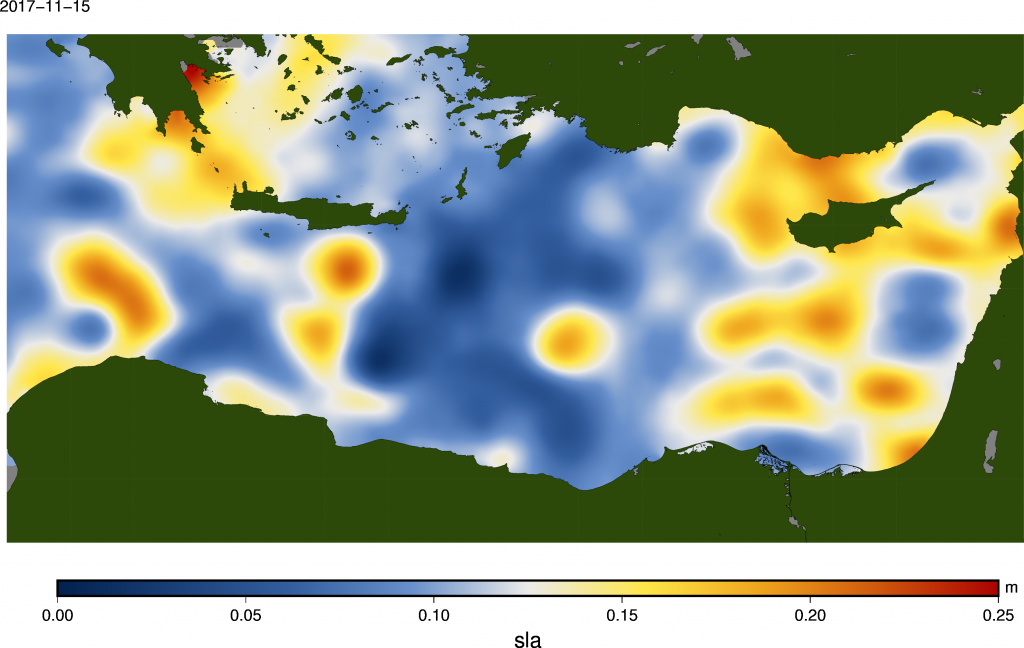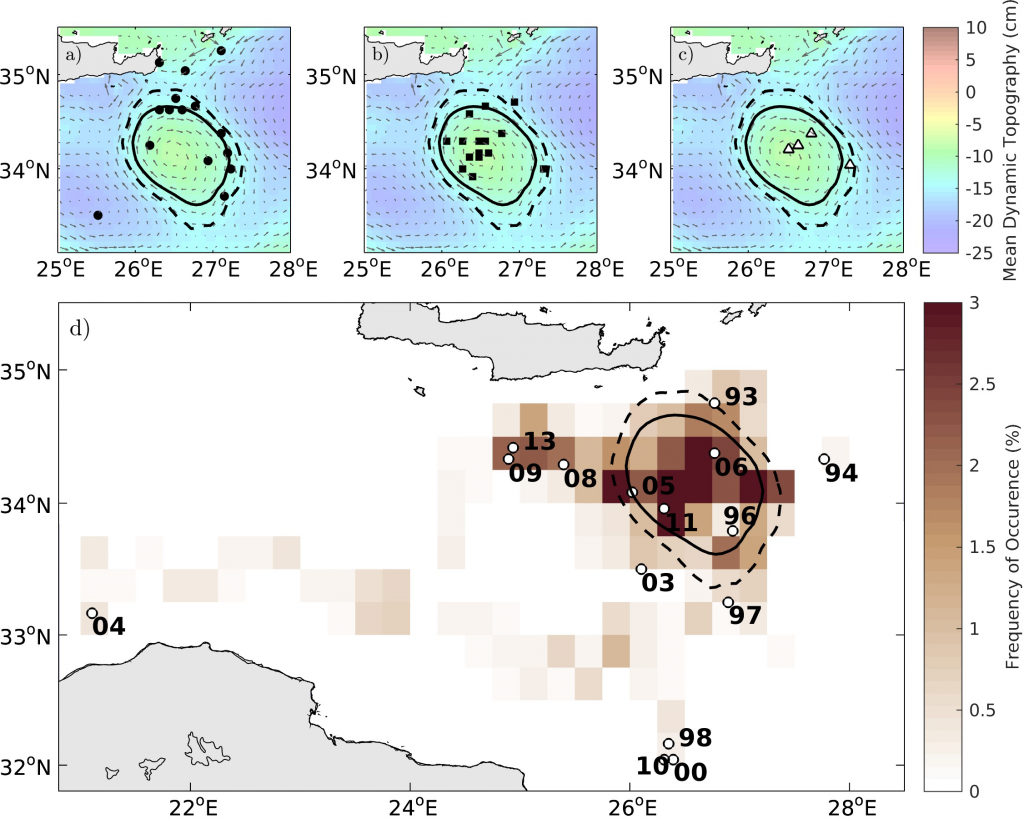
The Ierapetra gyre is a semi-permanent anticyclonic eddy South-East of Crete, in the Eastern Mediterranean. This intense anticyclone is considered as wind forced by the Etesian winds. This regional wind is channelized by the Cretan mountains and induces locally a significant wind stress curl. The maximum eddy intensity is usually reached in Fall when the Ierapetra gyre is located around its climatological mean position (27°E, 34.3°N). However, the intensity of the gyre varies significantly from year to year, in particular when a preexisting gyre is already present in the generation area. It is then likely to be intensified and thus prevent the formation of a new one during the period of strong Etesian winds.

Once generated, the gyre generally stays around its formation area but some years it moves away following a dynamical evolution and a trajectory which is complex and does not seem to follow a general path. Besides, the eddies can merge with another anticyclone or split in two.
The consecutive mergings are likely to lead to very long lifetimes that could exceed three years. A recent studies has shown the year-to-year position and intensity to the Ierapetra gyre for 22 years, using Duacs data (Delayed-time Absolute Dynamic Topography) and the Ameda eddy-detection algorithm.
Reference
Ioannou, A., Stegner, A., Le Vu, B., Taupier-Letage, I. and Speich, S., Dynamical Evolution of Intense Ierapetra Eddies on a 22 Year Long Period. J. Geophys. Res. Oceans. Accepted Author Manuscript. doi:10.1002/2017JC013158